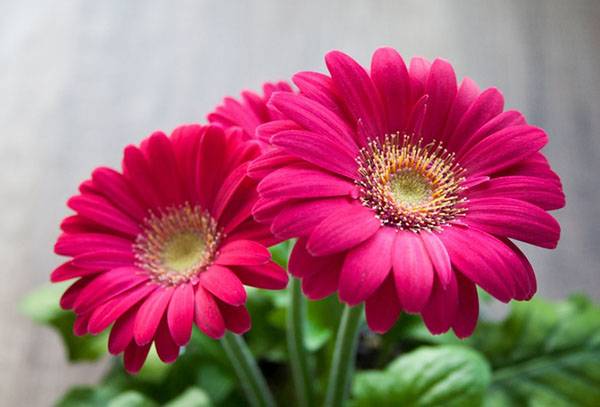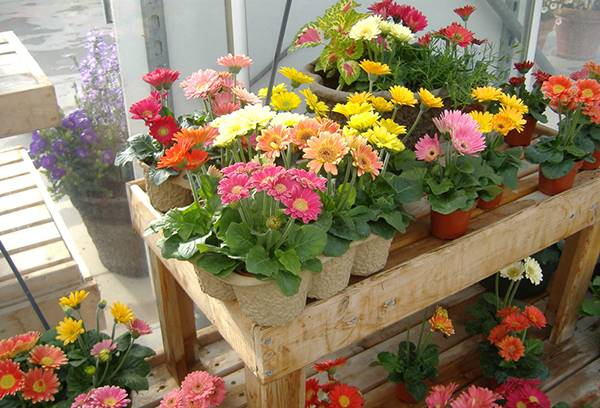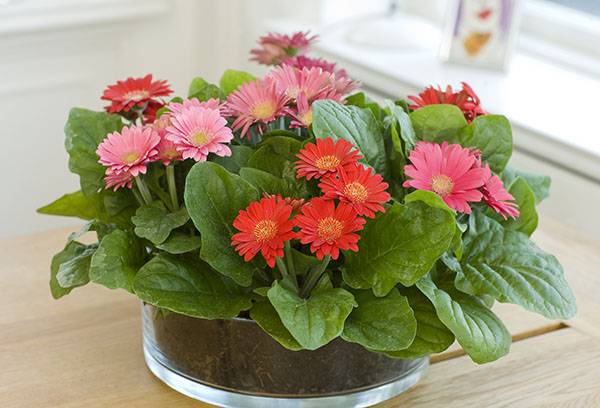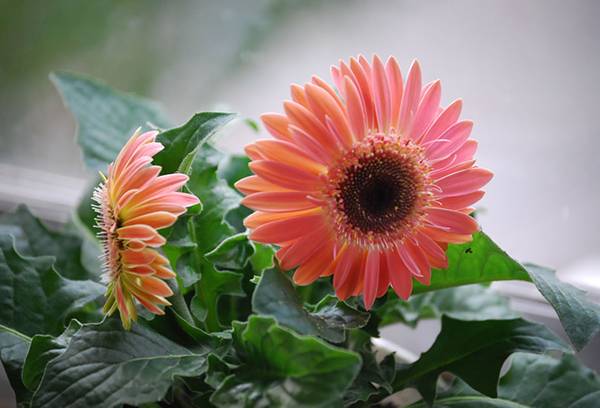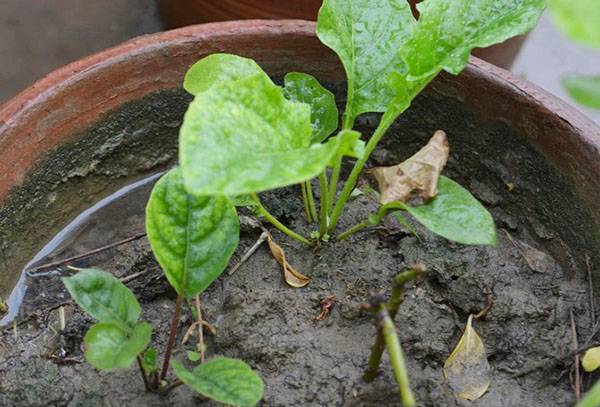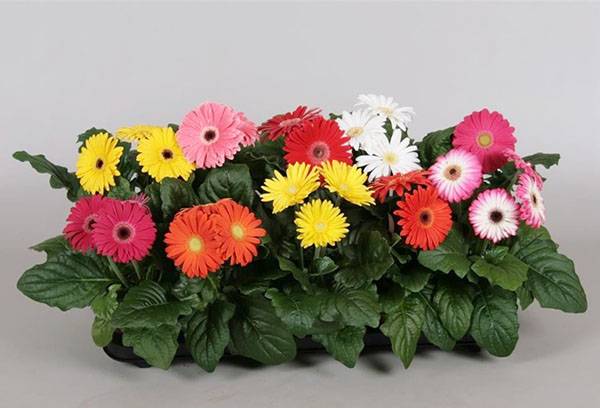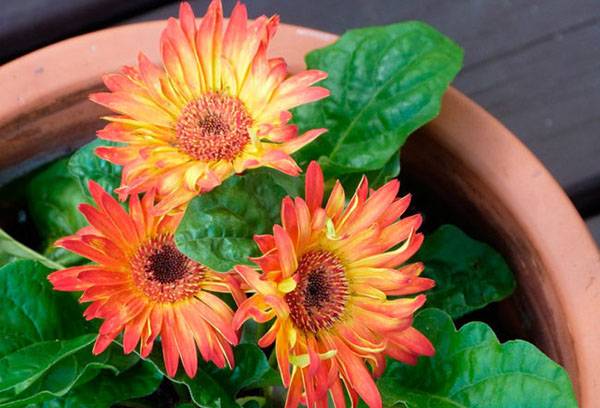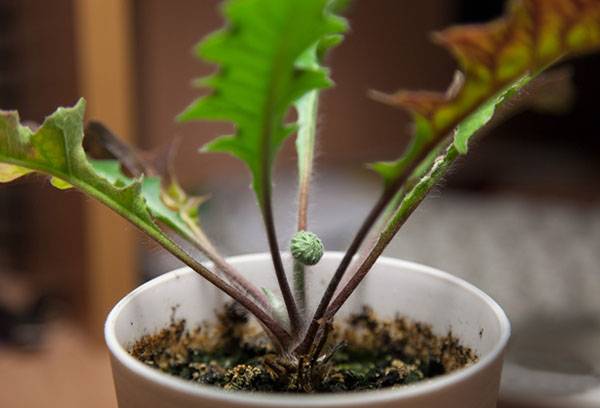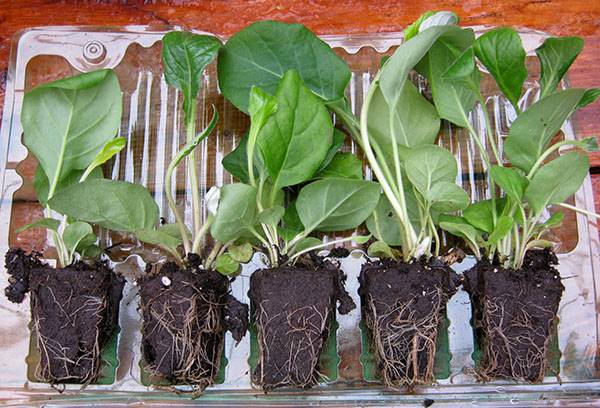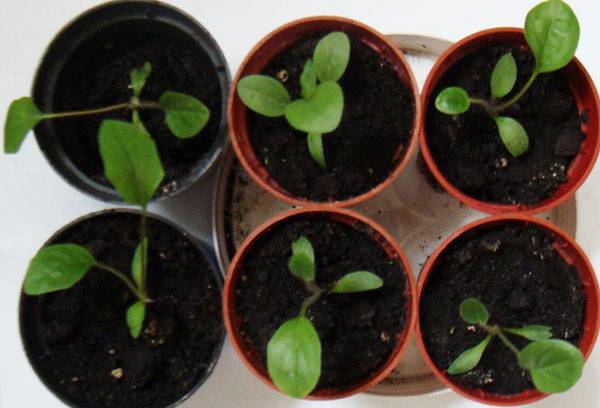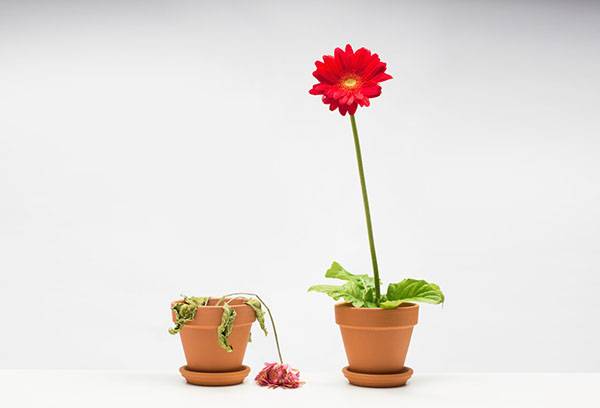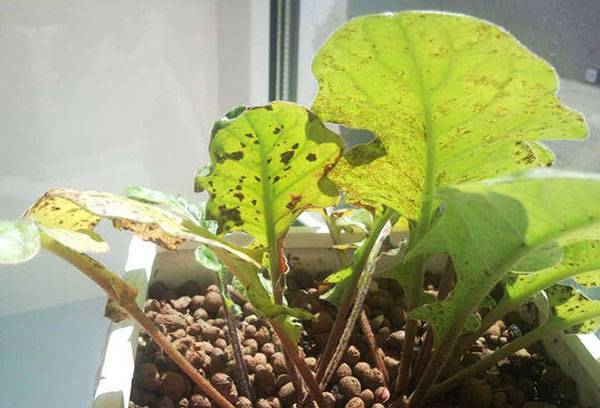How to care for a room gerbera?
Content:
- Culture Description
- Popular varieties of potted gerbera
- How to care for a gerbera at home?
- Choosing the right place
- Content temperature
- Irrigation mode, humidity
- Top dressing
- Pruning
- Gerbera soil and pot
- Compliance with the rest period
- Gerbera transplant
- Breeding room gerbera
- Bush division
- Cuttings
- Growing seedlings
- Possible growing problems
- Why do leaves of a yellow gerbera turn yellow?
- Disease Pest Control
Gerbera is a common flower used by florists to compose various compositions. Miniature gerbera varieties are grown at home, but flowering can only be achieved if the rules of care are followed. Although the potted culture is unpretentious, there are biological features that should be considered when growing. Below you will find information about the correct transplantation, reproduction, care for gerbera, common growing errors.
Culture Description
The genus Gerbera is one of the largest family of plants - Asteraceae. All representatives have a grassy habit (appearance), which is hinted at by the name of the genus, derived from the English word herba - grass. The distribution area of gerberas covers the tropical zone of southern Africa and the islands of Madagascar; several species have been found in Asian countries.
Gerbera forms inflorescences-baskets, consisting of two types of flowers. The core is represented by tubular flowers capable of seed reproduction. On the edges are barren reed flowers, which many mistakenly consider to be petals. Reed gerbera flowers can be painted in any shades and their combination, excluding the gamut of blue.
Tip
A houseplant with blue petals is not the fruit of selection - it is obtained with the help of a dye. In Europe, the gerbera was nicknamed the Transvaal daisy.
Greenhouse gerberas are grown worldwide for cutting. Peduncles in such plants reach a length of 60 cm. Indoor cultivars are small in size, grow up to 25 cm in height. The bush forms a basal rosette, consisting of cirrus-dissected leaves of an elongated-oval shape. The surface of the plate is pubescent.
The peduncle up to 30 cm long carries a single basket resembling a large daisy with a diameter of 4-12 cm. The flowering lasts 3-4 months, accompanied by a rich pleasant fragrance. Fruits - small achenes, retaining germination up to 6-8 months.
Popular varieties of potted gerbera
Pot gerberas are descendants of the species of Jameson and Gerbera viridifolia (green leaf). Thanks to the work of breeders, a lot of varieties for cultivation in a pot have been bred. Usually cultivars are divided by the shade and shape of the petals. There are plain and two-color corollas, simple and terry. The color of the core is varied, but excludes blue tones.
Consider several popular varieties of room gerbera:
- Pam - deep pink petals framing the red-brown center;
- Valerie - the outer part of the petal is pale pink, the hue is lilac outside, the core is brown with a terry yellow edge;
- Yasmina - the yellow center is framed by light pink tongues;
- Sophie - this variety has a light core with protruding stamens and red-pink tongues along the edge;
- Rachel - a green core framed by bright scarlet petals;
- Orange - saturated orange petals, bright yellow center.
Every year the assortment of cultivars is replenished with new copies of miniature gerberas.
How to care for a gerbera at home?
Beginning flower growers, who received a gerbera as a gift, sometimes do not know what care she needs. When growing, you need to recreate conditions that are close to the natural habitat.
Choosing the right place
Indoor gerberas are photophilous representatives of the flora. In order for the crop to bloom regularly, provide good diffused lighting. Such indicators can be achieved on the east or west window. The southern window sill is suitable only if there is a tulle that will protect the crown from sunburn. If there is no choice and you have only a window on the north side, be sure to arrange a lightning so that daylight hours are 12-14 hours. But it’s important not to overdo it: if the plant is highlighted longer, the biological mechanism of transition to dormancy will work, so do not be surprised that the indoor gerbera does not bloom.
In summer, you can arrange a houseplant on the street or balcony. Gerbera is very fond of well-warmed fresh air. Be sure to ensure that the scorching sun does not touch the delicate foliage.
Content temperature
The tropical guest is thermophilic, prefers a temperature background at the level of 22-25⁰C. Prolonged stay in a cool room leads to the absence of flower buds, contributes to the transition to a state of rest. In winter and autumn, do not keep the pot on the insulated balcony. Temperatures below 13 ° C will adversely affect health and can cause illness.
Tip
If there is a draft on the windowsill, place a circle of polystyrene under the pot. The insulation will protect against overcooling of the root system.
Irrigation mode, humidity
Growing in a tropical zone has made indoor gerbera a lover of moisture. Soil needs to be irrigated so that it is constantly a little wet. It is impossible to fill the flower, since this will provoke the development of mycelium of fungi, decay of the lower leaves. Water for irrigation should be at the same temperature as the air in the room - not lower than 22⁰C. Therefore, the best way to irrigate will be the bottom watering. The temperature difference in the root zone will lead to a decrease in the immunity of the culture.
At home, it is important to maintain high humidity. The indicator is increased by spraying the leafy part with warm water. During the procedure, try to avoid getting on the baskets - this will affect the decorativeness of the room gerbera. Spray the bush in the morning or in the evening so that the remaining droplets under the influence of the sun do not cause a sunburn.
If your indoor gerbera does not rest in the winter, installing a pot in a pallet with wet pebbles or moistened sphagnum will help maintain high humidity.
Top dressing
Organic dressing for room gerbera is not suitable, so use ready-made liquid fertilizer based on mineral salts. The composition of the fertilizer should differ depending on the season.
Being at rest, the plant is steadily increasing its green mass. Therefore, in the summer and from the end of winter to mid-spring, fertilizing with a predominance of nitrogen should be applied 2-3 times a month.
During flowering, the needs of indoor gerbera change - the crop needs more potassium. Since the plant does not tolerate salinity of the soil, fertilizing should not be abused. Use half the concentration of the mineral complex.
Pruning
Throughout the growing season at room gerbera you need to cut off the drying leaves and peduncles. Such a measure helps to maintain decorativeness, serves as the prevention of diseases and pests. If you decide to get seed, leave one inflorescence so that the rest do not stretch the plant's forces to form seeds.
Tip
You can use scented flowers of indoor gerbera for cutting. In a small amount of water, they will delight the eye for 3-4 weeks.
Gerbera soil and pot
The substrate for growing gerbera should have the following indicators:
- friability;
- ease;
- nutritional value;
- water permeability;
- neutral acidity
- lack of organic components - humus, compost, manure.
You can purchase a ready-made soil mixture specifically designed for mini-gerberas, or make it yourself. For the manufacture of the substrate, sheet soil is mixed with peat and sand in a ratio of 2: 1: 1. Instead of sand, chopped moss sphagnum is suitable. A little perlite or vermiculite is added to the mixture.
The ideal pot for indoor gerbera should be made of unglazed clay, but a ceramic or plastic container will do. The diameter of the container is important, which is selected 2-3 cm larger than the previous pot. In a cramped container, the plant will take root more quickly and begin to bloom. A spacious pot contributes to the development of a powerful root system, but inhibits flowering.
Important!
A prerequisite for the normal development of a houseplant is the presence of drainage holes at the bottom of the selected container.
Compliance with the rest period
The organization of the winter dormancy of indoor gerbera will favorably affect budding in the next season. A significant reduction in daylight at the end of autumn leads to a lack of sunlight and a natural transition to hibernation. At this time, top dressing should be completely removed, watering should be gradually reduced. Maintain a moderate temperature background in the room - 14–16⁰C.
By the end of winter, the bushes gradually come to life, growth is activated, intense budding begins. Gradually return to normal room gerbera care. You can keep bushes year-round under artificial lighting, but this often leads to depletion and loss of decorativeness.
Gerbera transplant
Gerbera transplantation is carried out at the time of exit from dormancy. It is best to do this early spring or late summer. The transplant is performed only if the flower has become crowded in the allotted capacity or the time has come to divide the overgrown bush.
Tip
Do not transplant the newly acquired potted gerbera, let it get comfortable in the new conditions for 3-4 weeks. If the bush is dotted with flowers, it is better to wait for the transition to a dormant state.
In a new pot, an indoor gerbera is transferred together with an earthen lump (transplantation by transshipment method), after falling asleep 2-3 cm high from expanded clay aggregate to the bottom. Do not allow deepening of the growth point of the leaf rosette, it should rise 1-2 cm above the surface. After transplanting, place the gerbera in penumbra for 4-5 days, do not feed 3-4 weeks.
Breeding room gerbera
Gerberas are plants that will eventually need rejuvenation or complete replacement.
Reproduction is carried out in three ways:
- division of the uterine bush;
- rooting cuttings with a “heel”;
- growing seedlings.
Consider the nuances of each method.
Bush division
After 3-4 years, an adult bush can be planted to obtain young shoots. The division procedure is carried out in summer or early spring, before entering the flowering phase. To do this, remove it from the pot and divide with a knife so that each piece has at least 2-3 growth buds and a well-developed root lobe. Sprinkle the slices with charcoal and transplant the dividends into separate pots according to the technology described above. Flowering young gerbera will come next season.
Cuttings
For cuttings, an adult plant 3-4 years old is suitable. The stem stem with a piece of rhizome is separated from the mother liquor. Place the stalk in a moist substrate and cover with foil. The appearance of young leaves indicates the success of reproduction.
Growing seedlings
You can grow a gerbera from seeds. At home, this method is used less often, because offspring rarely inherit varietal characters. Cross-pollination will be required to collect seeds from their bushes. Ripened seeds are immediately sown in a peat-sand mixture, becausethey quickly lose germination.
Tip
When purchasing seeds in the store, pay attention to the date of collection.
Seeds are sown in small bowls, sprinkled with sifted sand and moistened. The container is covered with glass or film, kept warm. Seedlings dive twice: at the stage of development of 2-3 leaves and after the appearance of the fifth leaf. Take care of them like ordinary flower seedlings.
Possible growing problems
Indoor gerbera will not forgive its owner for flaws, so it is important to carefully observe the rules of cultivation.
- Do not allow moisture to enter the center of the leaf outlet - this leads to the development of rot.
- Do not allow the earthen coma to dry out. The gerbera signals a lack of moisture by the loss of deciduous turgor.
- Apply dressing in a timely manner to avoid exhaustion, weakening of immunity.
- Periodically loosen the top layer of the substrate to increase aeration of the root system.
- Do not water the flower with cold water; avoid draft.
- Remove wilted baskets and leaves.
Subject to the above rules, problems with growing room gerbera at home will not arise.
Why do leaves of a yellow gerbera turn yellow?
The appearance of yellowness on gerbera leaves may indicate a lack of sunlight or burns. The reason for the color change is sometimes due to a nutritional deficiency, and the leaves also turn yellow during an attack of pests or the development of mycelium of fungi.
Disease Pest Control
Gerbera has strong immunity, but improper care, especially violation of the irrigation regime, leads to the development of fungal diseases - powdery mildew, fusarium, various types of rot, late blight. They can be recognized by the appearance of spots of different colors, "powdered" with fungal spores. If you find signs of a fungal disease, remove the infected parts of the bush, spray with a fungicide solution.
Of the pests, spider mites, whiteflies and aphids attack the indoor gerbera. By the time of detection, pests manage to form a colony and harm the health of the flower. The deciduous mass is covered with yellow speckles, withers, and then dies, depriving the bush of food. A small number of parasites are exterminated by the infusion of garlic, and a large colony is better to destroy with insecticides.
So, if you follow the recommendations for care, indoor gerbera will annually please bloom. Bright “daisies” will cheer you up in a dank autumn and decorate the interior of your home.
